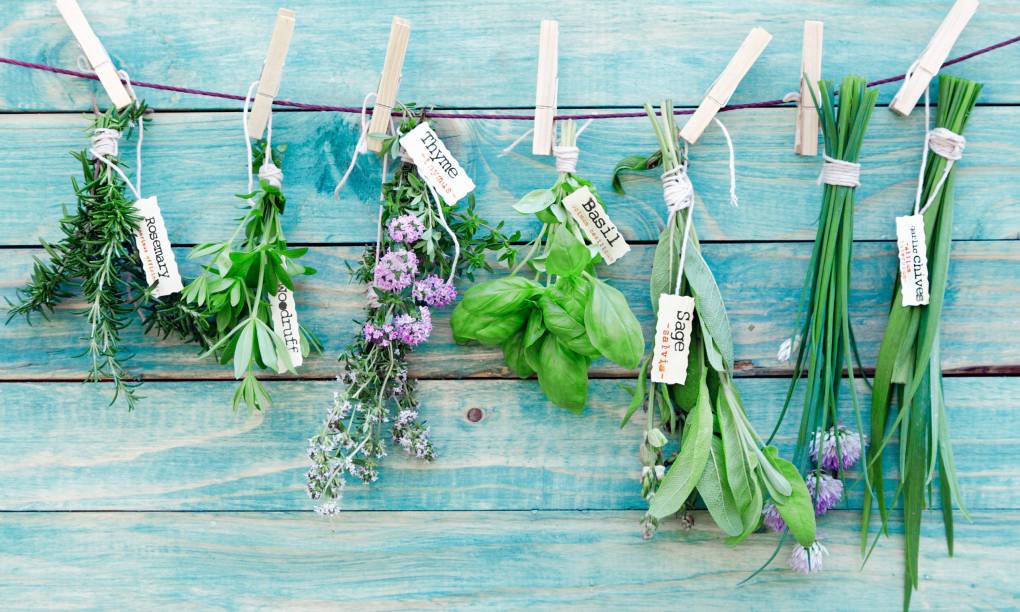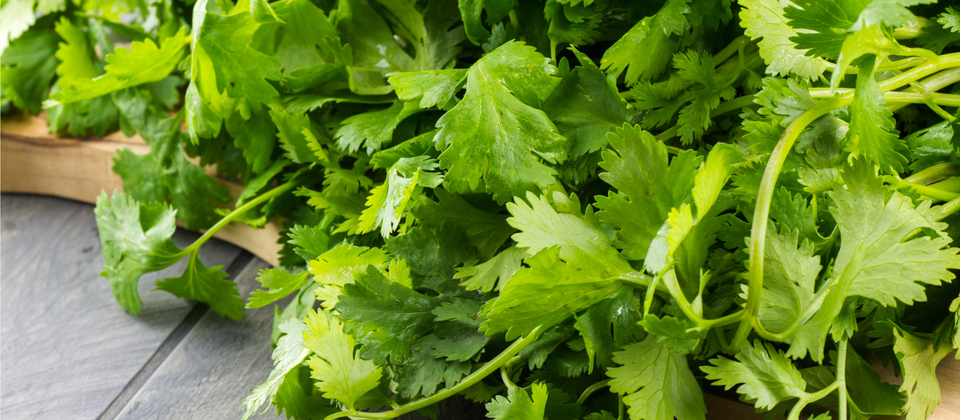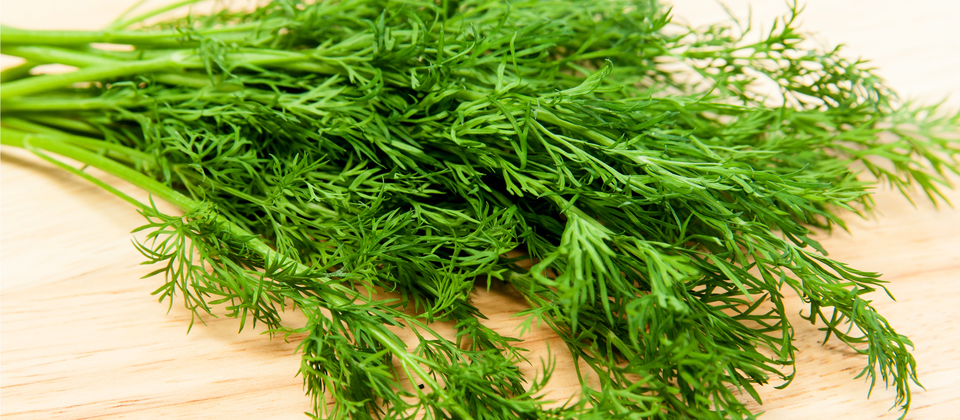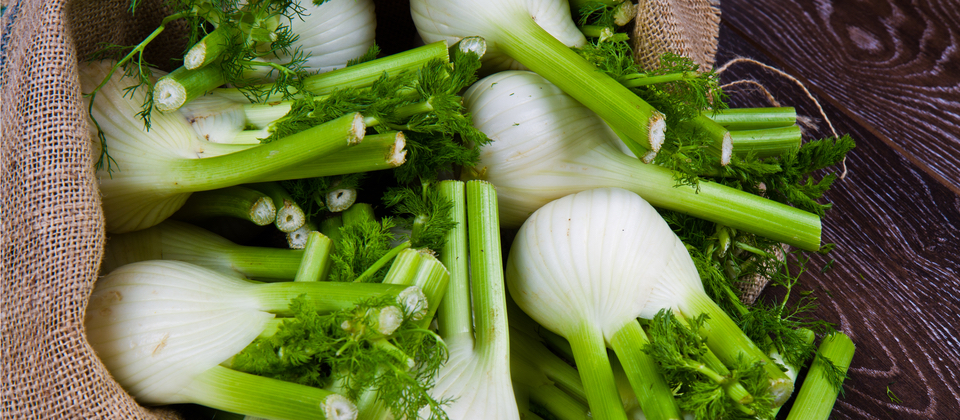
The Fresh Guide to Herbs
Posted on March 28, 2017 under banging kale basil sauce, basil, chives, cilantro, dill, dill carrots, fennel, Fennel and Mushroom Pasta, fennel pasta, fresh herbs, Grilled Skirt Steak with Fennel Orange Salad, growing, herbs, horseradish dill sauce, meg van der kruik, spring, spring greens, Tess Masters, the blender girl, thyme
It’s time to get out in the garden by growing some must-have herbs. Ideal for adding that extra flavor to your favorite dish, we’ve compiled a list of what we think are the essential herbs for any successful foodie, as well as a couple of our favorite recipes to test them out!
Basil

If you’re after a warm, spicy flavor, basil is the herb for you. To plant it, sow the seeds near a sunny window or a greenhouse during early spring. After that, move it to a garden in early summer. You can also sow the seeds directly into the garden in late spring if you prefer.
How to Use Basil
Soups, salads, omelets, meat, poultry, fish… the list of foods you can use basil in just go on and on! You can also use it as a basis for pesto and smear it onto crackers for a quick and delicious snack. We love Meg van der Kruik’s Banging Kale Basil Sauce recipe, which goes with just about everything from pasta to roasted vegetables.
Chives

If you’re not a fan when it comes to cutting onions but want a way to still get that delicious flavor, chives are your new go-to herb. You can plant the seeds in spring (or fall) 1/2 inch deep in rows 12 inches apart. Once the seedlings are established, thin within the rows to 6 inches apart.
What does thinning mean?
When you grow plants from seeds, you typically place 2-3 seeds in each hole in the ground in the case that some don’t grow. However, if you do happen to have green fingers and they all end up flourishing, they will be competing with each other for water, soil nutrients, sunlight, and space to grow. Essentially, “thinning” just means removing the extra seedlings from each pot or clump so that there is only one seed remaining. This also gives that one seed the chance to really grow and flourish into something beautiful!
How to Use Chives
With a mild onion essence, chives can be chopped and added to salads, egg and cheese dishes, cream cheese, mashed potatoes, sandwich spreads, and even sauces. No need to cry over these greens to achieve a delicious onion taste!
Cilantro

Cilantro is best sown early on in spring, planted 1/4 inch deep in rows 12 inches apart. It is ideal to thin within established seedlings to 6 inches apart.
How to Use Cilantro
You can use the dry seeds to powder and dust over veal, pork or ham before you start cooking. Cilantro roots (which can be frozen) are used to flavor soup, and you can even serve them chopped with avocados!
Dill

Another ideal herb to sow in early spring, dill should be planted 1/4 inches deep in rows 9 inches apart. They should be thinned within established seedlings up to 9 inches apart.
How to Use Dill
It should be noted that both the seeds and leaves have a sharp, bitter taste. We recommend using dried or fresh leaves (dilweed) to flavor fish, soups, salads, meat, poultry, omelets and potatoes. You can even sprinkle it on sliced cucumber to make a tasty sandwich filling! A couple of our favorite recipes using dill are a simple carrot side dish which is perfect when you don’t want to put in too much effort. You can even try making our Horseradish Dill Sauce, which is sure to give yogurt a great tang, and go beautifully with poached salmon, grilled meat, fish or veggies.
Fennel

You can sow fennel in groups of 3 or 4 seeds in mid spring, 1/4 inches deep and 18 inches apart. It’s a good idea to thin established seedlings to the strongest of each group.
How to Use Fennel
The leaves of fennel have a sweetish flavor to them, which is particularly good in sauces for fish. It’s also great with pork or veal, in soups and in salads. The seeds have a sharper taste to them, and if you like, you can even eat the bulb! For recipes where you can really bring out the flavor of this herb, try our Grilled Skirt Steak with Fennel Orange Salad for a main dish that will wow, or a delicious Fennel and Mushroom Pasta – you can take your pick!
Thyme

Thyme should be planted during the middle of spring, and ideally in shallow rows about a foot apart. Once the seedlings are established, thin them to 6-inch spacings. Once this is done, they should then be set out in nursery-grown planting in early spring, around 6-9 inches apart.
How to Use Thyme
Thyme is a great herb that can be used in a variety of different foods. You can rub chopped leaves (fresh or dried) over beef, lamb, veal or pork before roasting it in the oven. Thyme can be sprinkled over eggs, cheese dishes, vegetables, fish, poultry, and added to soups, stews, stuffings and rice. For a deliciously unique Massel recipe, try out our Thyme for Mushroom Gravy by the Blender Girl, Tess Masters, to accompany your next main dish.
Love what you’ve read so far? Tell us how you get on with your herb growing on our Facebook page!


